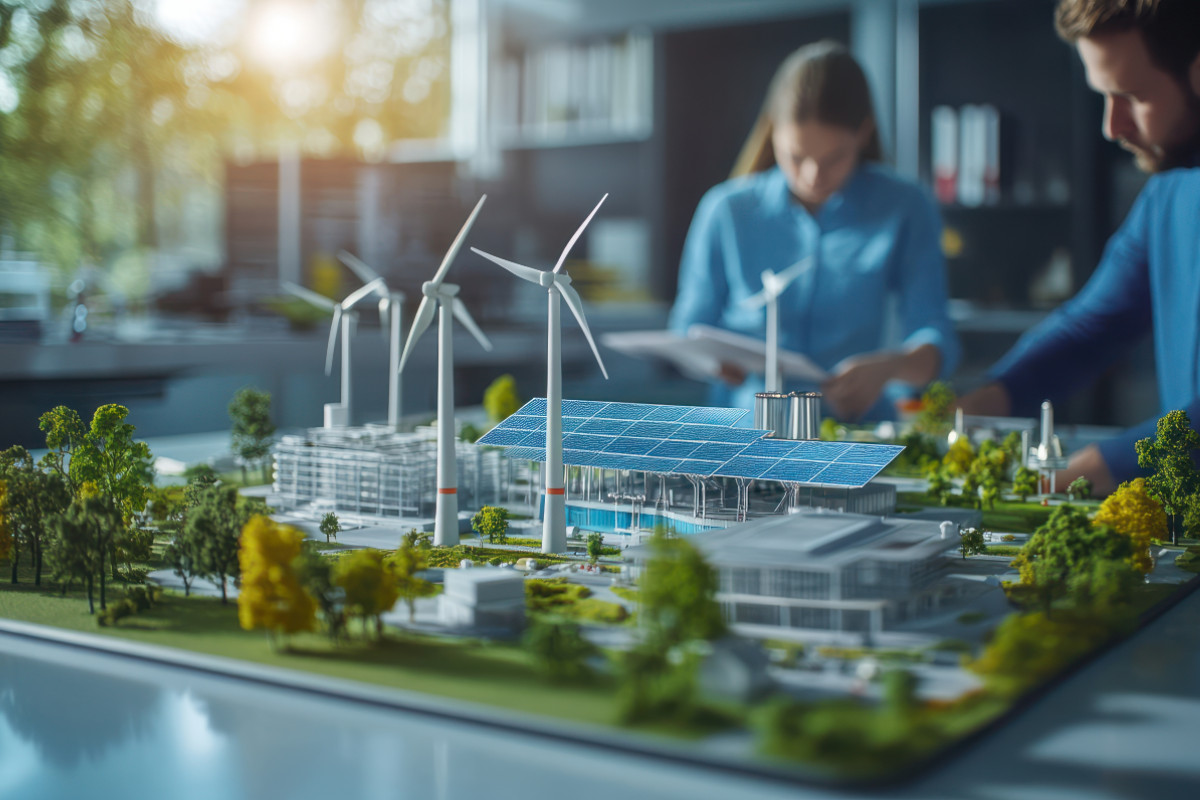Could 2025 prove to be the pivotal year for our clean power policy going forward? Oli Pettersen, Connections Manager at Balance Power, believes so, as he explains.
The publication of the UK Government’s Clean Power 2030 (CP30) Action Plan in December marked a significant step forward in the country’s transition to cleaner, greener energy. With its ambitious goals for reshaping the energy system, the government has outlined a roadmap to deploy clean, reliable power across the nation.
However, the road ahead is filled with challenges – chief among them, the growing pressure on our grid infrastructure and the fragmented nature of the planning process. While the Government’s attention to grid connectivity is welcome, there is an urgent need for further action; with a coordinated effort to tackle roadblocks at every stage of the development lifecycle being required. This will involve developing a culture of cohesive action across government departments and local planning authorities, seizing the opportunities of the few ‘easy wins’ left available to the Government, and exploring decentralised energy solutions such as behind-the-meter generation.
To reach net zero by 2050, we cannot afford for the focus of 2025 to remain limited on removing a few targeted development hurdles. Ambition, vision, and a great acceleration must be achieved, which can only be made possible with cooperation from all stakeholders.
Bridging national and local priorities
One of the underlying causes of delays in both grid expansion and planning approvals is a lack of cohesion between national energy priorities and local development policies. The CP30 Action Plan rightly highlights the disconnect between government departments like the Department for Energy Security and Net Zero (DESNZ), the National Energy System Operator (NESO), and Distribution Network Operators (DNOs) on one hand, and local planning authorities (LPAs) on the other. The result is a fragmented system where planning authorities, responsible for granting permissions, often reject or delay projects that align with national energy goals because they conflict with local planning priorities.
Currently, LPAs often take up to 12 months to approve energy infrastructure projects, far exceeding the four-month target set for applications requiring an Environmental Impact Assessment.
To resolve this issue, in 2025 we need to focus on integrating the national grid and energy strategies more closely with local planning frameworks. This could be achieved via the creation of regional energy task forces, where representatives from national bodies like DESNZ, NESO, and DNOs would work alongside local planning authorities to align national energy goals with local planning needs. These task forces would help create clear regional energy roadmaps, ensuring that local authorities are better equipped to approve projects that contribute to national decarbonisation targets.
Additionally, updating the National Planning Policy Framework (NPPF) to explicitly prioritise renewable energy projects and providing clearer guidelines on how local authorities should evaluate them would help streamline the approval process, reduce delays, and ensure consistency in decision-making.
Restructuring and re-integrating local and national planning authorities will not be a quick or easy feat – but it must be achieved. Whilst high-effort, high-reward initiatives like these are developing, we must also not ignore some of the easier wins available to the current government. An example of this would be to look at increasing the number of planning officers within local authorities. A relatively simple development such as this could significantly speed up the approvals process for renewable energy projects, forming a low cost solution to help address the bottleneck at local level.
By fostering better communication and alignment between these bodies, the UK can reduce friction and speed up approvals. A more cohesive approach would ensure that projects critical to achieving the CP30 goals are fast-tracked and delivered efficiently, without being delayed by local political dynamics or misaligned priorities.
The grid is straining at capacity
A key challenge that remains, however, is the grid bottleneck. While the CP30 plan is clear on the importance of increasing grid capacity to support the development of future renewable energy projects, the reality is that the grid is already struggling to keep up with demand. The Climate Change Committee’s 2024 Progress Report underscores a worrying trend: the UK’s grid is filling up rapidly, and the cost and time required to connect new projects is rising sharply. Grid connection delays can take years, particularly for offshore and large-scale projects, and the cost of connecting these projects often makes up a significant portion of their total cost.
While the Government has proposed measures to streamline the connection process, the rate of grid expansion and connection is still too slow to keep pace with the country’s growing clean energy needs. As the grid nears capacity, we need to find complementary solutions to reduce pressure on the system and avoid stalling the progress toward our 2030 emissions targets.
Turning to decentralised energy solutions
Decentralised energy solutions like behind-the-meter (BTM) generation offer a valuable opportunity to alleviate some of the pressure on the grid. Behind-the-meter systems are where businesses or other large energy consumers generate their own renewable power onsite (or in close proximity), bypassing the need for complex and expensive grid connections altogether. This decentralised approach not only reduces strain on the national grid but also empowers businesses to take control of their energy use, ensuring a higher standard of accountability, and providing clarity to their respective decarbonisation efforts.
The Government should continue to encourage the uptake of BTM generation, particularly as grid connections become more scarce and costly. In this context, behind-the-meter solutions can act as a complementary strategy to grid expansion, providing businesses with affordable, reliable, and 100% renewable energy while also easing pressure on national infrastructure.
From 2025 to 2050: The path forward
The UK’s ambition to achieve net zero emissions by 2030 is achievable – but only if we tackle both the grid and planning challenges that are holding back progress. The CP30 Action Plan provides a strong foundation for this transition, but its success will depend on effective implementation. Streamlining grid connections, investing in planning resources, and fostering better communication between national and local authorities are all critical steps toward achieving the 2030 goals.
At the same time, we must not overlook the potential of decentralised solutions like behind-the-meter generation. These solutions can ease pressure on the grid, reduce costs, and help businesses meet their decarbonisation targets faster and more affordably.The time to act is now. By adopting a holistic approach that combines ‘big fixes’ – like grid expansion – and the ‘easy wins’, such as improving planning efficiency, we can accelerate the UK’s clean energy transition and ensure that net zero goals are met.


